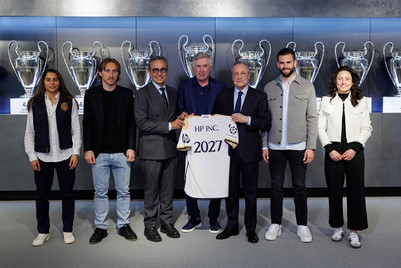
Considering all the changes brought by the pandemic to the creative process in the past year, with its restrictions on film shoots, dilutions of live activations and more limited interactions of creative teams, one might not suspect that this has been a positive year for creative effectiveness.
Yet during a Spikes Asia X Campaign panel, CMOs and consultants looking at the process from a brand perspective, it’s clear there have in fact been many silver linings to the pandemic bringing about long overdue changes with positive results.
R3 principal Shufen Goh says not all clients have sophisticated systems for measuring effectiveness and some still a lot of room for improvement, especially in integrating their creative and media effectiveness tools through the process.
“In the last year, I think a lot of our clients are looking at how do they pivot, and change quickly to a more dynamic way of creating work and bringing it to market via digital channels,” she says.
More testing
HP’s Greater Asia CMO Siew Ting Foo explains the recent focus on digital transformation has really brought out “the notion of having a test and learn mindset and actually using digital metrics and tools to really help our marketers understand how that creative content really works.”
Many large multinationals and FMCG brands already have very well established systems for this. “We have a fairly rigorous pre-testing mechanism we use, whether survey, qualitatitve or index,” says Anita Kanal, APAC VP of consumer marketing at Visa. “The intention is that we will pre-test from the concept stage to actual work stage before launching it in market. Then we're tracking it while it is live, and through the campaign period to ensure that those creative metrics are hit, but also to separate what marketing is doing, versus any of the other dynamics in the industry that's helping to drive that end result.”
Goh says more brands are now interested in creating more iterations of creative work that they can test out now, given that the novelty of programmatic has now given way to an imperative to deliver on the promise of more personalized content, and advances have now put this in reach of marketers.
“What might have been cost prohibitive in the past, using some of this technology has now become a [way for clients] to innovate with a different way of pushing out a message to cut through and also get it to market. I think in many aspects, the pandemic has been a good accelerator of looking at alternative ways of creating original works.”
More agile & efficient
Foo agrees, saying the pandemic has brought a new agility to marketing and agency teams, ensuring the process is more productive in a shorter amount of time. In particular, business shifts that require content to immediately drive ecommerce sales forces creative teams to “start small, think big and move fast” without the luxury of long consultations and meticulously drawn-out production schedules.
“Clients used to gripe, ‘Oh my God, why do I need 10 people from the agency to come to this meeting when I’m paying for all those hours’ and ‘why do we need to fly all those people to the shoot’” Goh says. “But now, obviously, we found a better way to do it where we don't need that and there's efficiency from the process that's been forced upon all stakeholders.”
More mobile-centric
The pandemic has also advanced a more mobile-centric marketing agenda, something both clients and agencies have been keen to do while continuing to default to big-screen thinking.
“As marketers, we're all tasked today to turn these headwinds into tailwinds. The tailwind that we can all take advantage of is the way that these physical consumers on mobile are very dynamic digital consumers,” says Kanal.
Citing how for the first time in the world, more than 50% of the world accesses social media platforms actively, more than 60% has a smartphone and more than 55% uses the internet regularly, Kanal points to the new opportunity marketers have in reaching this audience who are online all the time with no place to go.
“What that means to us as marketers is we can actually start honestly developing for a mobile-first audience. I think in the past, what many of us have had to do or what we've been given is work that’s developed for the large screen but gets pushed through a mobile screen. Whereas now we are actually creating for a mobile-first audience because of these massive digital consumption numbers,” she says.
“That’s been a great tailwind for us, because we're creating for that audience, we're creating for a shorter span of time, we're creating for vertical formats, we're creating for all the right things. So in that respect, it's been positive.”
(This article first appeared on CampaignAsia.com)


.jpg&h=334&w=500&q=100&v=20250320&c=1)
.jpg&h=334&w=500&q=100&v=20250320&c=1)

.jpg&h=334&w=500&q=100&v=20250320&c=1)


.jpg&h=334&w=500&q=100&v=20250320&c=1)


.jpg&h=334&w=500&q=100&v=20250320&c=1)




.jpg&h=268&w=401&q=100&v=20250320&c=1)



